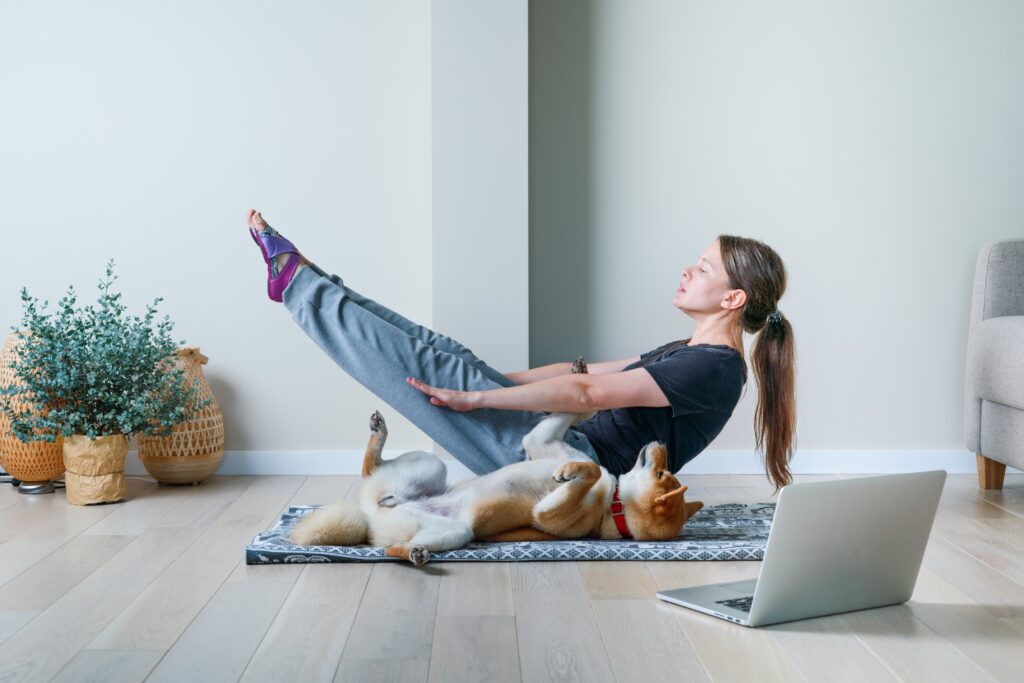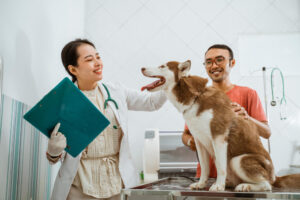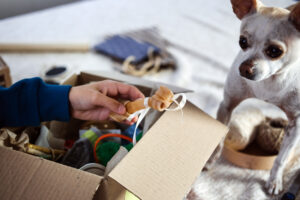Is it possible that your dog is getting too much exercise? Yes. How is that so? Don’t dogs love running around and playing with their owners? Of course, they do! Sometimes a little too much for some pups! The problem is our dogs cannot tell us verbally what they need. Dog owners need to learn what to look out for to avoid over-exercising their dogs. Looking into their dog’s body language and observing their behavior to indicate what’s ordinary and unusual can help prevent any health issues. You don’t have to cut time from taking your dog on a walk, letting them roam free at the dog park or beach, and playing games with them. But you may consider changing your routine up a little bit to ensure your dog’s safety.
Panting
Is your dog breathing more intensely than usual? Just like humans, dogs get exhausted too! Maybe it’s time to slow down, take a break, or even pick up your dog and leave. Your dog is tired out and needs a moment to catch its breath.
Joe Alcorn, M.S., D.V.M. of Care Animal Hospital recommends letting your dog recover for “5-10 minutes” until your dog’s breathing is normal again. Consider pacing yourself on walks, hikes, or even playtime with your dog. Be sure to pack some water and even a water bowl if possible when going on walks, hikes, or playing at the park and beach. Water will help keep your dog cool after a long, exhausting walk or on a hot day. Give them a break every once in a while. Dogs may need their exercise, but they also love attention, so take a moment to give them a nice belly rub or pet. Maybe some words of encouragement from all that running around. Working in breaks into your routine will give your dog a moment to relax for a moment. Make sure your dog is breathing regularly before continuing any activity.
Wear and Tear Paws
Some dogs enjoy their playtime and exercise. It seems like those walks only get longer and longer. Your arm is giving out from throwing the ball non-stop because you’re wondering when they’ll get tired, but some dogs enjoy playtime so much that they will not indicate that they need to stop. According to Dr. Susan Jeffrey, a veterinarian with Truesdell Animal Hospital, dogs care more about play than their paws. It’s up to the dog owner to be able to set limits for your dog’s play to avoid tearing up their paws. Try to create a playtime/exercise routine with a timeline. Give it enough time for your dog to get some time outside and their energy up, check in on your dog if you do spend a little more time out than planned, and be able to get your dog ready to go home instead of engaging in more activity. Your dog might upset that playtime is over, but they’ll be thankful that they’re not damaging their paws because they wanted to take another walk around the block.
How do you know if your dog’s paw has wear and tear? You’ll have to examine their paws yourself. Paula Fitzsimmons for PetMD indicates that their paw pads skin may be red, appears thinner, worn out, there might be tears in the skin, and if it is “infected, you may see swelling or pus.” Consider thinking about how you feel about your own barefoot on concrete or dirt? You wouldn’t want to be barefoot the entire time. So understanding your dog’s paws over time will experience wear and tear. Foot injuries are uncomfortable and painful for humans for dogs: Dr. Robin Downing, hospital director of The Downing Center for Animal Pain Management in Windsor, Colorado. Dogs carry around “60% of their weight on their front limbs.” If your dog is injured, don’t force them to walk on their paws. If you plan to go on long walks with your dog, consider investing in a dog carrier, carriage, or even little shoes to protect them from wear and tear paws.
Signs of Injury (Limping, Stiffness/Soreness)
If your dog shows any symptoms of being sore, they are stiff or have been limping, let your dog rest. They need it!
If your dog is limping, take a break from any exercise. It will only make the injury worse if you encourage your dog to continue to walk on a limp. Jennifer Coates, D.V.M., and Pet Life Today advisory board member suggest dog owners check their dog’s paws to make sure there’s not an “embedded object” in their paw, such as “thorns or stone.” Take your dog to the veterinarian if limping does not go away after a week.
In cases of stiffness and soreness, it’s ok if your dog takes a few days to rest and recover. But if things do not improve after a few days, contact your veterinarian so your dog can get adequate care.



